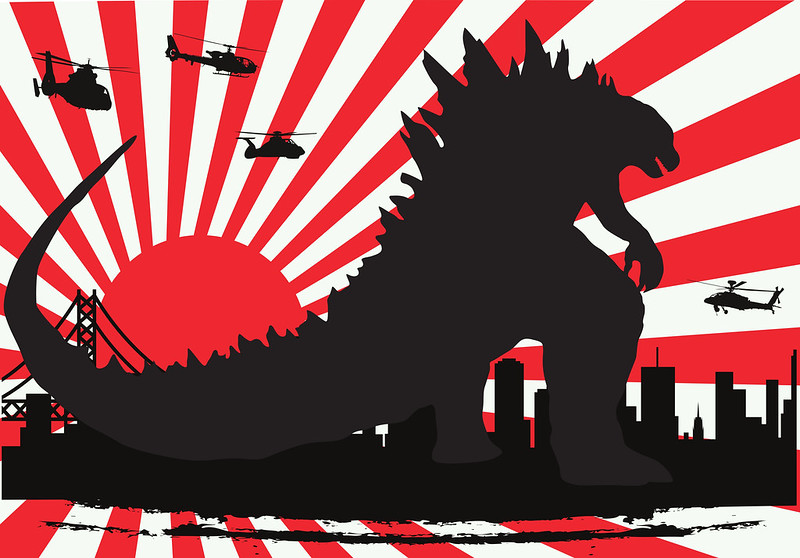
Dissecting Godzilla
The 1954 Japanese monster classic Godzilla, created by the renowned Ishirō Honda, never fails to be a worldwide box office hit with each remake. The latest one, by Warner Bros., is a $160 million big budget movie dubbed “King of Monsters” and is scheduled to open in Japan next month.
Godzilla in Shinjuku
Godzilla (ゴジラ ) is a popular tokusatsu (live action film or television drama full of special effects) character. Since its debut, Godzilla has become a pop culture icon worldwide with 28 films produced by Toho Co., Ltd. in Japan alone. The famous tokusatsu character is also popular in novels, comic books, television series, and video games.
In ateji (kanji used phonetically) Godzilla is written as Gojira, a combination of the Japanese words gorira (gorilla) and kujira (whale). The giant monster was initially befittingly described as a cross between a gorilla and a whale as seen in its power, size, and origins from the ocean.
Godzilla’s appearance has slightly varied over the years since 1954 but the overall impact has remained the same. Godzilla was inspired by the fictional character called Rhedosaurus, created by the animator Ray Harryhausen, from the 1953 giant monster science-fiction film ‘The Beast from 20,000 Fathoms.” The initial Godzilla character was an amphibious reptilian monster loosely based on the concept of a dinosaur that stands erect, has muscular arms, and an anthropomorphic torso, scaly skin, a furrowed brow, and spikes on its back running all the way to the tail.
Teizô Toshimitsu sculpting an early Godzilla design, circa 1954.
The art director working on the project, Akira Watanabe, combined some aspects of the alligator, Iguanodon, Stegosaurus, and Tyrannosaurus and turned it into a monstrous fire-breathing creature that mutated from the atomic bombs dropped in Japan to end World War II. To show the effects of the bombing, the appearance of Godzilla also showed visible signs of scarring in the texture of its skin having keloid scars as seen in many of the Hiroshima survivors. Thus, Gojira began as something of a metaphor for the pain, rage, and devastation visited on the Japanese people.
The famous Godzilla roar was created by the Japanese composer Akira Ifukube by rubbing a resin-coated glove along the string of a contrabass and then slowing down the previously recorded playback. In the early Godzilla films, an actor was made to wear an uncomfortable latex costume, and later, the monster was an animatronic stop-motion creation. The techniques were a far cry from the more realistic computer-generated images of today. Imagine the possibilities decades from now.
